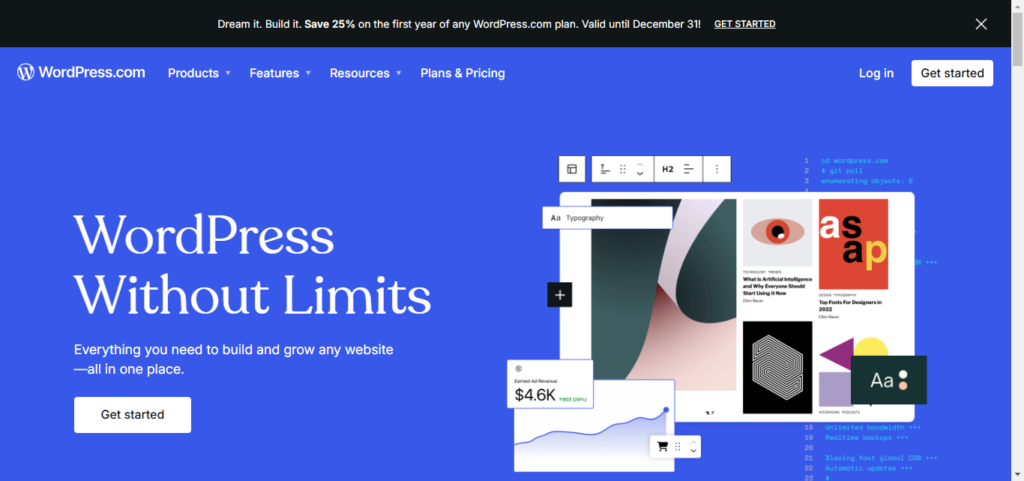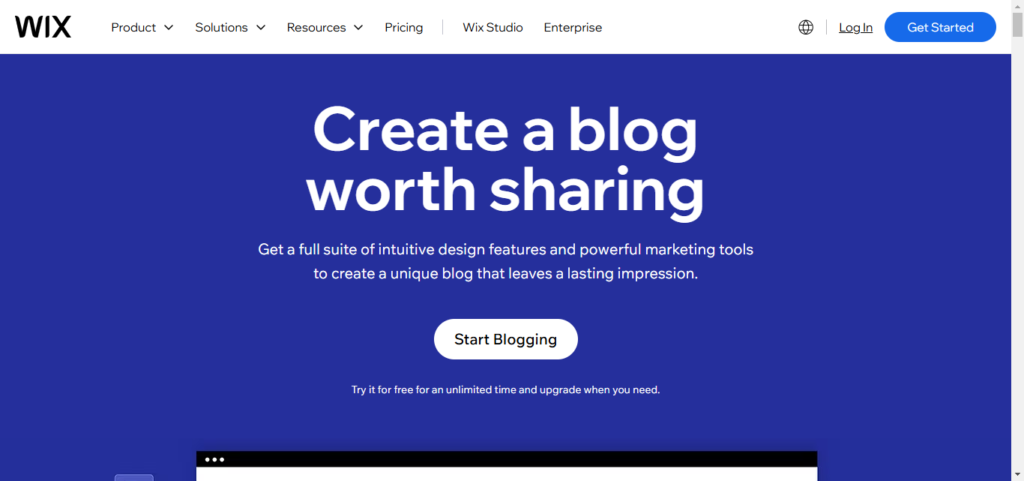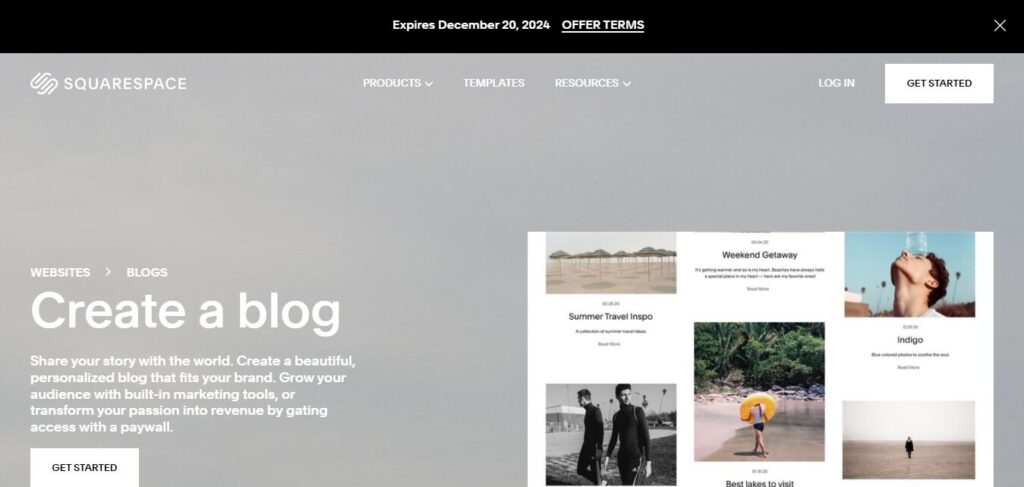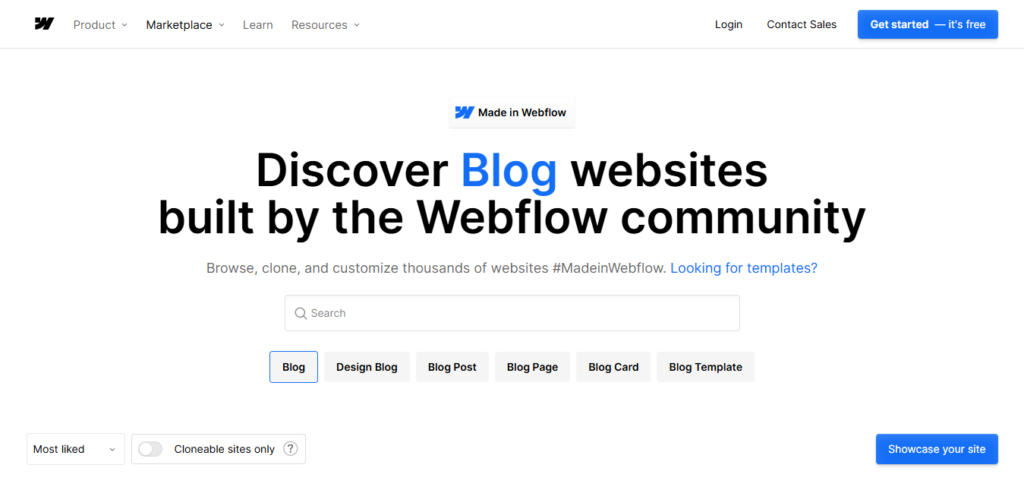In this post, we’ve covered
- What are the best blogging platforms for food bloggers
- Features to help you choose the best food blogging platform
- 4 Best blogging platforms for food bloggers
What is the best blogging platform for food bloggers?
The best blogging platform for food bloggers is one that offers high customization options for designing visually appealing layouts, strong multi-device optimization for simple display, robust SEO tools for ranking in search engines, fast site speed for better user experience, and many more.
In general, a blogging platform is a (CMS) Content Management System where you manage your blog site (website) and customize your blog pages and posts the way you want.
It doesn’t require coding since you can use a pre-built site template that you can easily customize.
Features to help you choose the best food blogging platform
In general, no matter the type of blogging platform you are going to use if you want a platform that meets your food blogging needs you must ensure that they possess the features below;
(A). Ease of Use: A good food blogging platform should be beginner-friendly with an intuitive interface, making it simple for you to write, edit, and publish blog posts. This is essential for food bloggers who need to focus more on content creation than technical challenges.
(B). Customization Options for Showcasing Recipes: The platform should offer design flexibility, and allow you to display food recipes in an attractive, user-friendly way with custom recipe layouts, photos, and step-by-step instructions.
(C). Mobile Optimized: Since many readers will access your blog on mobile devices, the platform should ensure mobile-responsive designs. This will make your blog look professional and function perfectly on mobile devices.
(D). SEO Features: To rank high in search engine results, the platform should have built-in SEO tools or plugins that help optimize content, images, and meta tags, boosting the blog’s visibility.
(E). Flexible Monetization Options: A good food blogging platform should allow bloggers to monetize through ads, affiliate marketing, sponsored content, or even selling products like cookbooks, ensuring multiple income streams.
(F). Integration with Social Media: Social media integration is key for food bloggers to share their posts directly on platforms like Instagram or Pinterest, encouraging readers to engage, share, and follow updates easily.
4 Best Food Blogging Platforms
- WordPress.org
- Wix
- Squarespace
- Webflow
[1]. WordPress.org

WordPress.org, often called self-hosted WordPress, is a free content management system (CMS) used to create websites and blogs.
It requires separate web hosting to use which enables it to stay online for website visitors to access, without web hosting, WordPress.org can’t be used or accessed.
It’s the most popular CMS globally, powering over 43% of all websites on the internet. That is more than 475 million blogs and websites.
Features of WordPress for food bloggers
- Ease of use: User-friendly with extensive tutorials and support.
- Customization options: Extensive themes and plugins for personalized design and functionality.
- Mobile Optimization: Lots of responsive themes are available.
- SEO features: Powerful plugins like Yoast SEO and Rank Math.
- Flexible monetization: Supports various methods including ads, affiliate marketing, selling products, etc.
- Social media integration: Seamless integration options with various social media channels using plugins and widgets.
Examples of food blogs built with WordPress.org
How to start a food blog on WordPress.org
- Step 1: Click on “HostGator” to host your blog
- Step 2: Choose your preferred HostGator plan
- Step 3: Choose your preferred domain & complete your sign-up
- Step 4: Within your HostGator account “Install WordPress” your blogging platform
- Step 5: Within WordPress choose your blog theme [A Pre-built Site]
- Step 6: Remove, add, or customize the pre-designed pages and you can also create and customize as many as possible blog posts as you want.
How to start a food blog step-by-step
[2]. Wix [$17/month]

Wix is a popular cloud-based website builder that allows you to create professional-looking websites without needing extensive coding knowledge.
It offers a drag-and-drop interface, a wide variety of templates, and a vast app market to customize your website.
Wix powers over 222 million websites and blogs on the internet.
Features of Wix for food bloggers
- Ease of use: User-friendly with a drag-and-drop editor.
- Customization options: Lots of templates and design flexibility.
- Mobile Optimization: Mobile editor for custom adjustments.
- SEO features: Basic SEO tools and features.
- Flexible monetization: Allows ads, affiliate links, and online stores.
- Social media integration: Integration with social media platforms.
Examples of food blogs built with Wix
[3]. Squarespace [$16/month]

Squarespace is a popular cloud-based website builder that can allow you to create a professional-looking food blog without needing extensive coding knowledge. It offers a drag-and-drop interface, a wide variety of templates, and a vast app market to customize your website the way you want.
It powers over 5 million websites and blogs on the internet.
Features of Squarespace for food bloggers
- Ease of use: Intuitive drag-and-drop interface.
- Customization options: Stylish templates with some customization capabilities.
- Mobile Optimization: All templates are mobile-responsive.
- SEO features: Built-in SEO tools and clean code.
- Flexible monetization: Supports ads, affiliate links, and product sales.
- Social media integration: Good integration with major social networks.
Examples of food blogs built with Squarespace
[4]. Webflow [$14/month]

Webflow is a cloud-based website builder that allows you to create custom websites without coding.
It’s known for its powerful design tools and flexibility, making it a popular choice for designers and developers.
Webflow powers over 4 million users on the internet.
Examples of blogs built with Webflow
Features of Webflow for food bloggers
- Ease of use: More complex, aimed at users with some design experience.
- Customization options: High customization with advanced design capabilities.
- Mobile Optimization: Responsive design options.
- SEO features: Strong SEO capabilities with control over metadata.
- Flexible monetization: Supports various monetization methods.
- Social media integration: Good integration options.





